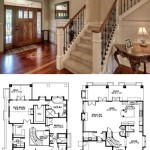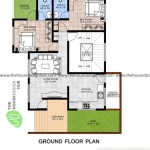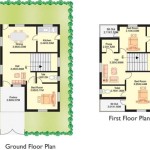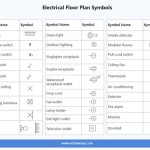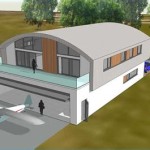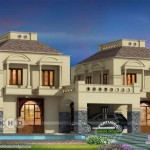2 Master Bedroom House Plans: Design and Functionality
The demand for two master bedroom house plans is steadily growing, reflecting evolving lifestyle needs and preferences. These plans cater to a variety of situations, from multi-generational living and rental opportunities to providing ample space for guests or a home office. Understanding the nuances of these plans, including design considerations, functional layouts, and potential benefits, is crucial for anyone considering building or renovating a home with two master suites.
A master bedroom, traditionally the largest bedroom in a house, typically includes features like an en-suite bathroom and a walk-in closet. When a house plan features two master bedrooms, each suite is designed with these amenities. This arrangement offers a significant degree of privacy and comfort for occupants.
The popularity of these plans stems from several factors. Firstly, multi-generational households are becoming increasingly common. Adult children returning home, aging parents moving in, or even extended families residing together all contribute to the need for separate, self-contained living spaces. Two master bedrooms enable different generations to maintain their independence and privacy while sharing a common residence. Secondly, the growing trend of renting out a portion of one's home, either short-term through platforms like Airbnb or long-term, makes a second master suite an attractive investment. It allows homeowners to generate income without compromising their own personal space. Finally, having a dedicated guest suite or a luxurious home office can significantly enhance the functionality and value of a home.
Key Point 1: Design Considerations for Two Master Bedroom Plans
Designing a house with two master bedrooms requires careful consideration of several key factors. The layout should prioritize privacy, functionality, and aesthetic appeal. The location of each master suite within the overall floor plan is paramount. For instance, situating one master bedroom on the main floor and the other on the upper level can provide a clear separation between occupants and cater to different accessibility needs. Alternatively, placing both master suites at opposite ends of the house can maximize privacy and minimize noise transfer.
Another important design consideration is the size and configuration of each master suite. While both suites are technically “master” bedrooms, their specific features and dimensions can be tailored to the needs and preferences of the intended occupants. One suite might be larger and more luxurious, while the other could be slightly smaller but more accessible. The dimensions of the walk-in closets, the layout of the en-suite bathrooms (including features like double vanities, separate showers and tubs, and private toilet rooms), and the inclusion of a private sitting area are all aspects that can be adjusted to suit individual needs.
The overall architectural style of the house should also complement the functional requirements of the two master bedroom layout. A modern, open-concept design might emphasize shared living spaces between the suites, while a more traditional design might prioritize distinct zones for each occupant. The exterior aesthetics of the house should also harmonize with the interior layout, ensuring that the presence of two master suites doesn’t detract from the overall visual appeal.
Furthermore, accessibility should be a central concern. Universal design principles can be incorporated to ensure that at least one master suite is easily accessible for individuals with mobility limitations. This might involve features like zero-threshold showers, wider doorways, and strategically placed grab bars. The inclusion of an elevator or a ramp might also be necessary, depending on the number of floors in the house and the needs of the occupants.
Key Point 2: Functional Layout Options for Two Master Suites
Several functional layout options are available when designing a house with two master suites. These options can be broadly categorized based on the positioning of the suites relative to each other and to the common living areas. A split-bedroom layout places the master suites on opposite sides of the house, separated by the living room, kitchen, or other communal spaces. This arrangement maximizes privacy and minimizes noise transmission, making it ideal for situations where occupants have different sleep schedules or require a high degree of personal space.
A second option involves stacking the master suites on different floors. This configuration is common in two-story houses, where one master suite is located on the ground floor for ease of access and the other is situated on the upper level, often alongside other bedrooms or a home office. This layout is particularly suitable for multi-generational families, as it physically separates different generations while still allowing for convenient access to shared living areas.
A third option involves creating a separate “wing” or addition for one of the master suites. This approach is particularly effective when converting an existing house to include a second master bedroom. A detached or semi-detached addition can provide a high degree of privacy and independence for the occupants of that suite. This option often includes a separate entrance, a kitchenette, and a private patio or garden area, effectively creating a self-contained living space.
Another less common but still viable option is to create a “Jack and Jill” master suite arrangement. This involves connecting the two suites via a shared bathroom. While this layout may not offer the same level of privacy as other options, it can be a practical solution for smaller houses or for situations where the occupants are comfortable sharing a bathroom space. However, careful consideration should be given to the design of the shared bathroom to ensure that it offers sufficient functionality and privacy for both occupants, such as separate sinks and toilet compartments.
Key Point 3: Benefits and Potential Challenges
The benefits of two master bedroom house plans are numerous. Increased privacy and comfort for occupants are the most obvious advantages. The ability to accommodate multi-generational families, provide guest suites, or generate rental income significantly enhances the functionality and value of the home. For homeowners who work from home, a second master suite can be converted into a luxurious home office, providing a dedicated workspace separate from the main living areas.
Two master suites can also increase the resale value of a home, particularly in areas with a high demand for multi-generational living or rental properties. The flexibility and versatility of the layout appeal to a wider range of potential buyers. The inclusion of high-end features in both suites, such as spa-like bathrooms and walk-in closets, further enhances the property's appeal and marketability.
However, there are also potential challenges associated with designing and building a house with two master bedrooms. The cost of construction can be higher compared to a traditional single-master bedroom plan, due to the additional square footage required for the extra bathroom and walk-in closet. Careful budgeting and value engineering are essential to manage costs effectively. Furthermore, obtaining building permits and complying with local zoning regulations can be more complex, especially when adding a second master suite to an existing house. It's crucial to consult with experienced architects and contractors who are familiar with local building codes and regulations.
Another potential challenge is the design and layout of the house to ensure that both master suites are equally desirable. Avoiding the perception that one suite is superior to the other is crucial to maintain harmony among occupants. This can be achieved by ensuring that both suites have similar square footage, comparable amenities, and equal access to natural light and outdoor views.
Finally, it's important to consider the potential impact on shared living spaces. A house with two master suites might require a smaller living room or kitchen to accommodate the extra bedroom space. Balancing the size and functionality of the shared areas with the individual needs of the occupants is essential to create a comfortable and harmonious living environment. Thoughtful planning and open communication with all occupants are key to addressing these challenges and maximizing the benefits of a two master bedroom house plan.

Plan 69691am One Story House With Two Master Suites Plans New 2 Bedroom

Building Plans With 2 Master Suites House Floor Design

Mountain Home Plan With 2 Master Bedrooms 92386mx Architectural Designs House Plans

Dual Owner S Suite Home Plans By Design Basics

House Plans With Two Master Suites Dfd Blog

Two Master Bedrooms 63201hd Bedroom Floor Plans Bungalow House

House Plans With Two Master Suites The Designers

Modern House Plan With 2 Master Suites 54223hu Architectural Designs Plans

House Plans With 2 Master Bedrooms Suites Floor

Barndominium Floor Plans With 2 Master Suites What To Consider

